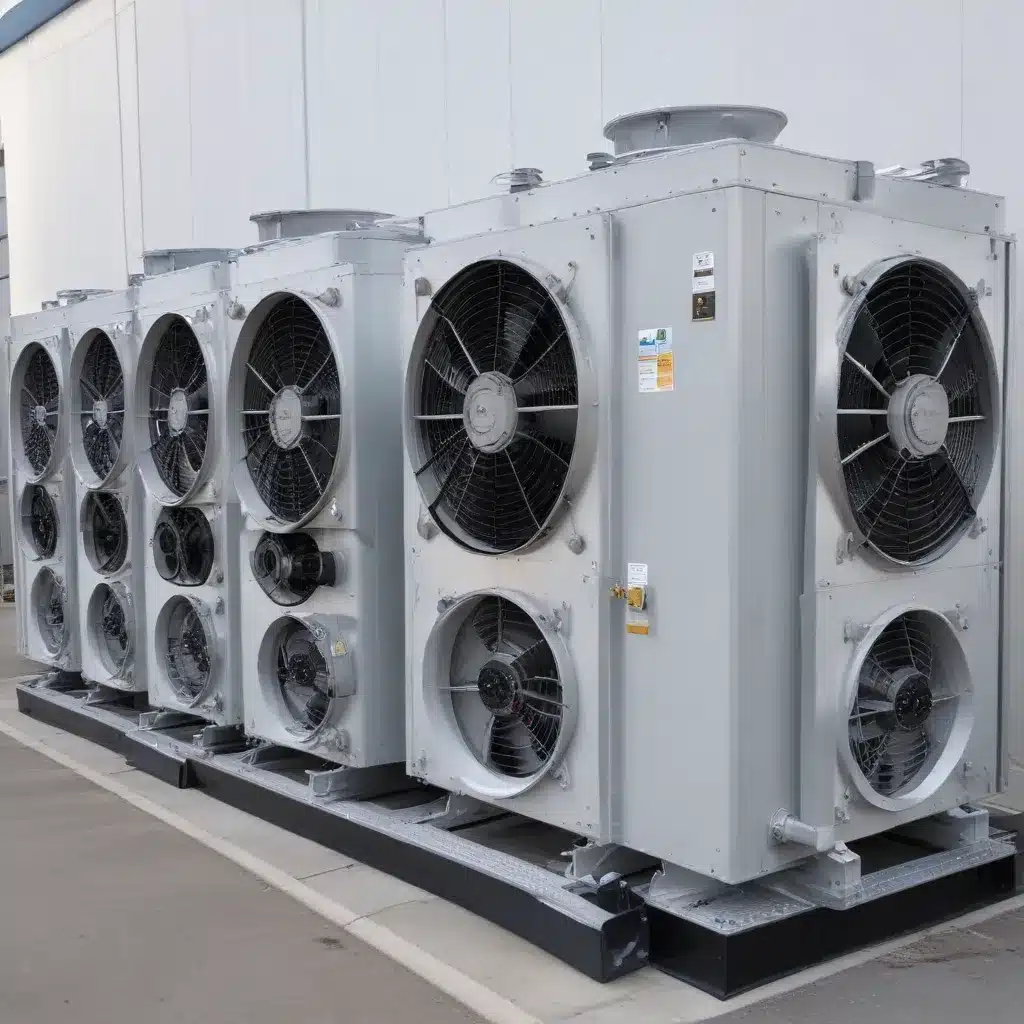
In the ever-evolving landscape of industrial and commercial energy efficiency, air-cooled heat exchangers play a pivotal role in optimizing thermal management and reducing environmental impact. As a seasoned expert in this field, I’m excited to share practical insights and cutting-edge developments that can help you enhance the performance and energy efficiency of your air-cooled heat exchanger systems.
The Shifting Landscape of Thermal Management
The demand for efficient and sustainable thermal management solutions has never been more pressing. Businesses and industries across sectors are facing increasing pressure to reduce their carbon footprint, lower operating costs, and adhere to stringent environmental regulations. Air-cooled heat exchangers, which utilize ambient air as the primary cooling medium, have become a popular choice for their versatility, reliability, and relatively lower installation and maintenance requirements when compared to water-cooled systems.
However, as the global landscape evolves, the need to push the boundaries of air-cooled heat exchanger efficiency has become paramount. Factors such as rising energy costs, climate change-induced temperature fluctuations, and the growing emphasis on renewable energy integration have prompted the industry to seek innovative solutions that can further optimize the performance and energy efficiency of these critical thermal management assets.
Exploring Hybrid Cooling Strategies
One of the most promising avenues for enhancing the energy efficiency of air-cooled heat exchangers is the integration of hybrid cooling systems. These innovative approaches combine the benefits of air-cooling with supplementary cooling mechanisms, enabling a more adaptable and resilient thermal management solution.
Evaporative Cooling Integration
Evaporative cooling, a process that leverages the evaporation of water to lower the air temperature, can be seamlessly integrated into air-cooled heat exchanger systems. By incorporating evaporative pre-cooling, the inlet air temperature can be significantly reduced, thereby improving the overall heat transfer efficiency of the heat exchanger. This hybrid approach is particularly beneficial in hot and dry climates, where the evaporative cooling process can be highly effective.
Key Benefits of Evaporative Cooling Integration:
– Improved heat transfer efficiency, leading to enhanced cooling capacity
– Reduced energy consumption by minimizing the workload on the primary cooling system
– Adaptability to changing environmental conditions, ensuring optimal performance year-round
Thermal Energy Storage Systems
Another innovative approach to enhancing the energy efficiency of air-cooled heat exchangers is the integration of thermal energy storage systems. These systems, which can be based on phase-change materials or sensible heat storage, can store excess thermal energy during periods of low demand and release it when needed, effectively smoothing out the energy consumption profile and optimizing the overall system efficiency.
Key Benefits of Thermal Energy Storage Integration:
– Ability to decouple heat generation from heat rejection, enabling more flexible and efficient operations
– Reduced peak energy demands, leading to lower utility costs and potential grid relief
– Improved resilience against fluctuations in ambient air temperature and availability
Hybrid Heat Pump Systems
Advances in heat pump technology have also paved the way for the development of hybrid heat pump systems that seamlessly integrate with air-cooled heat exchangers. These systems leverage the energy-efficient heat transfer capabilities of heat pumps to supplement the cooling or heating provided by the air-cooled heat exchanger, resulting in enhanced overall system performance.
Key Benefits of Hybrid Heat Pump Integration:
– Increased energy efficiency by leveraging the heat pump’s ability to transfer heat rather than generate it
– Improved temperature control and comfort by optimizing the heating and cooling capabilities of the combined system
– Potential for year-round efficiency improvements, addressing both heating and cooling requirements
Maintenance and Optimization Strategies
Alongside the implementation of innovative hybrid cooling and thermal storage systems, the ongoing maintenance and optimization of air-cooled heat exchangers play a crucial role in maximizing their energy efficiency and operational lifetime.
Fouling Mitigation and Cleaning Protocols
One of the primary challenges faced by air-cooled heat exchangers is the accumulation of airborne contaminants, such as dust, debris, and biological growth, on the heat transfer surfaces. This phenomenon, known as fouling, can significantly degrade the heat transfer efficiency and increase the system’s energy consumption. Implementing rigorous cleaning protocols and exploring advanced fouling mitigation strategies, such as self-cleaning technologies, can help maintain the heat exchanger’s performance and minimize the impact of fouling.
Optimizing Fan and Airflow Management
The fans responsible for driving the airflow through the heat exchanger are a critical component in determining the system’s overall energy efficiency. By optimizing fan selection, implementing variable-speed drives, and employing advanced airflow management techniques, you can ensure that the fans operate at their most efficient point, reducing energy consumption without compromising cooling capacity.
Predictive Maintenance and Diagnostics
Leveraging data-driven predictive maintenance and advanced diagnostics can help air-cooled heat exchanger operators anticipate and address potential issues before they lead to performance degradation or unplanned downtime. By continuously monitoring key parameters, such as vibration, temperature, and pressure, operators can identify emerging problems and implement proactive maintenance strategies, thereby maximizing the heat exchanger’s lifespan and energy efficiency.
Embracing the Future of Air-Cooled Heat Exchangers
As the industry continues to evolve, the future of air-cooled heat exchangers will be shaped by the integration of innovative hybrid cooling and thermal storage technologies, coupled with advanced maintenance and optimization strategies. By embracing these developments, you can position your organization at the forefront of energy efficiency and sustainable thermal management.
To learn more about the latest advancements in air-cooled heat exchanger technology and how you can enhance the performance of your systems, I encourage you to explore the comprehensive resources available on https://www.aircooledheatexchangers.net/. Stay tuned for more insights and practical guidance from our team of experts as we continue to push the boundaries of air-cooled heat exchanger innovation.

